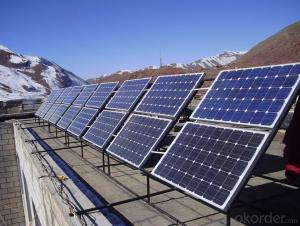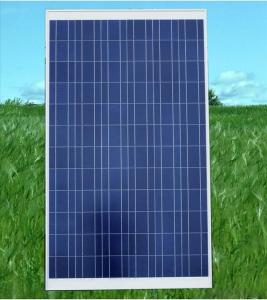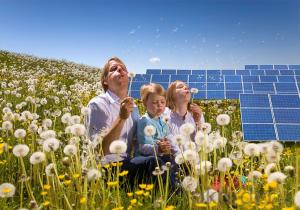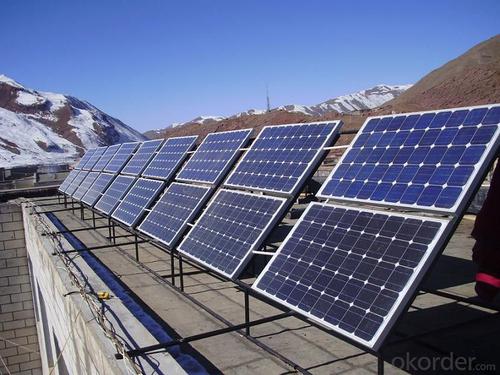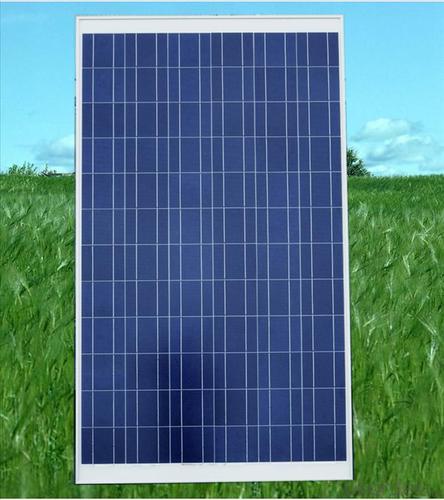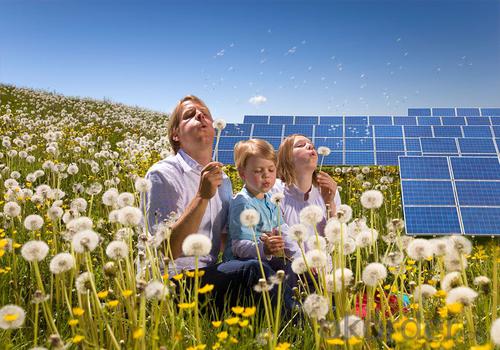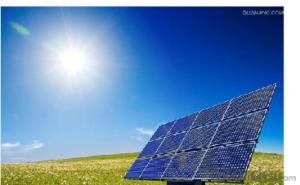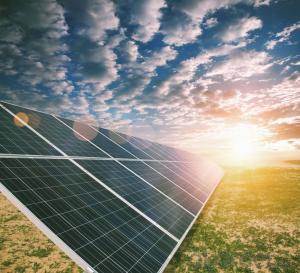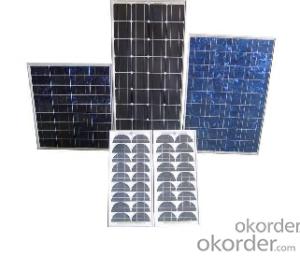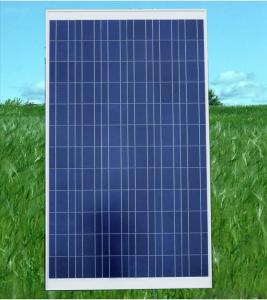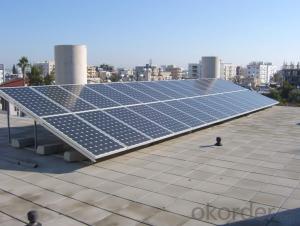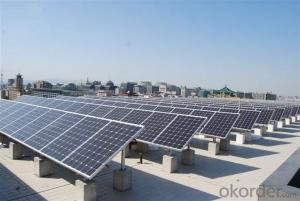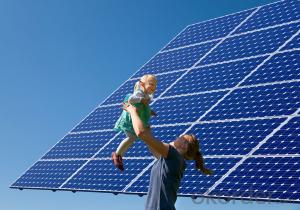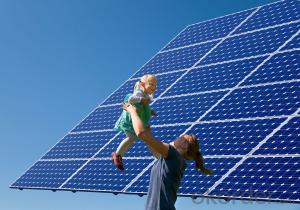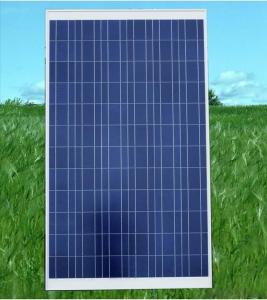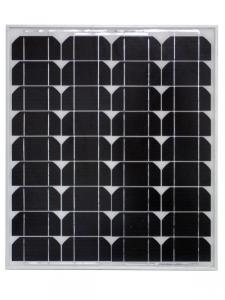Pole Mount Solar Panels - Silicon Polycrystalline Solar Panel 255W
- Loading Port:
- Guangzhou
- Payment Terms:
- TT OR LC
- Min Order Qty:
- 200000 watt
- Supply Capability:
- 20000000 watt/month
OKorder Service Pledge
OKorder Financial Service
You Might Also Like
INTRODUCTION
This installation Manual contains essential information for the electrical and mechanical installation that your must know before installing CUSTOMER PV modules. This also contains safety information you need to be familiar with .All the information described in this manual are the intellectual property of CNBM and based on the technologies and experiences that have been acquired and accumulated in the long history of CUSTOMER. This document does not constitute a warranty, expressed or implied.
GENERAL INFORMATION
The installation of PV modules requires a great degree of skill and should only be performed by a qualified licensed professional, including licensed contractors and licensed electricians. Please be aware that there is a serious risk of various types of injury occurring during the installation including the risk of electric shock. All CUSTOMER modules are equipped with a permanently attached junction terminal box that will accept variety of wiring applications or with a special cable assembly for ease of installation, and they do not require assembly.
WIRING
To ensure proper system operation to maintain your warranty, observe the correct cable connection polarity(Figures 1&2) when connecting the modules to a battery or to other modules. If not connected correctly, the bypass diode could be destroyed.
PV modules can be wired in series to increase voltage. Connect wires from the positive terminal of one module to the negative of the next module. Figure shows modules connected in series .
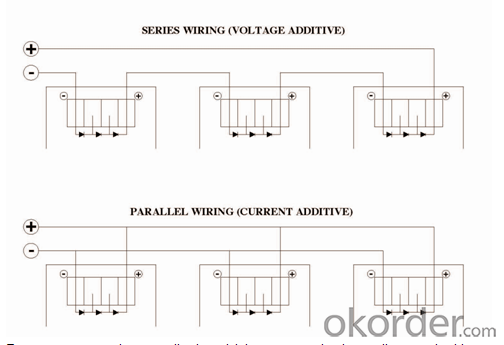
DATA SHEET
Maximum Power | 255W |
Efficiency | 0.157 |
Backsheet | White |
Frame Colar | Silver |
Manufacture Site | China |
Frame | Anodized Aluminum Alloy |
Weight | 19 kg |
- Q: Making a solar panelI know there was a recommended wattage for the soldering iron but i cant rememberdoes anyone know?
- Rosin okorder /
- Q: Please, I want a good definition. :DD
- Solar panel is a battery of solar cells. Solar cell is a device which uses the sun's rays to produce electricity by the photovoltaic effect. The photovoltaic effect involves the creation of a voltage (or a corresponding electric current) in a material upon exposure to electromagnetic radiation. It utilizes the generation of a voltage when radiant energy falls on the boundary between dissimilar substances (as two different semiconductors).
- Q: Can solar panels be used to power an entire home?
- Yes, solar panels can be used to power an entire home. By installing a sufficient number of solar panels on the roof or in the backyard, homeowners can generate enough electricity to meet their household's energy needs. Additionally, excess energy produced during the day can be stored in batteries or fed back into the grid for use during nighttime or cloudy days. The size and efficiency of the solar panel system, as well as the energy consumption of the home, will determine its ability to fully power the entire house.
- Q: How much space do I need for solar panels?
- The amount of space needed for solar panels varies depending on the size and capacity of the panels. On average, a typical residential solar panel system requires about 100-400 square feet of roof space, but it can also be installed in a backyard or ground-mounted depending on available space. It is best to consult with a solar installation professional who can assess your specific needs and determine the exact space requirements for your solar panels.
- Q: I just moved into somewhere with solar panels but don't really understand them...all I know is that they heat the water.Do I still have to turn the hot water on with the solar panels or do they heat it automatically or do they store the energy until I turn on the hot water?!
- Custom solar-heating systems are unique. Does yours have a circulating pump? Does it have a storage tank? Is the fluid that goes to the panels separated from the household water and transfers heat through a heat-exchanger radiator, and the fluid has antifreeze in it? If it does, is the antifreeze of the variety that won't poison your family if there is a leak? Does your system have a thermostat-controlled pump that turns on when the water in the panels are hot? Does it have a limit-thermostat to turn off the pump when water in the storage tank is hot? There are many more variations to operation of solar-heating panels. Find out who designed it or who knows how to operate it and ask them.
- Q: i want to know how to hook up solar panels to my existing power. all i can find on the internet is to use batteries and a inverter. but i want to use all of my existing lights and outlets off of the solar energy. i have heard that you can actually turn the meter backwards and use supplied power when needed. thats what i want to do and is it possible to do myself and if so, how?
- Im an ex solar installer. I dont know all the details but I know of 2 companies in hawaii that are doing what youre talking about - and yes, it feeds power back into the grid and makes your meter turn backwards. uh... darn... locate a company that does that stuff and they will tell you best how and what and why. The electric comapny will know less as they are (believe it or not) behind the times. 2st century technologies is the co. in hawaii. the owner is way cool. its a full-on expensive system though, not some cheesy diy thing. its gnarley. you need the special panels and all that. Photovoteic panels are really expensive. The system costs like 0k + but pays for itself after perhaps 6 years and then you reap the monthly check from the electric company for life (instead of you paying them) Inh hawaii, the sun is strong = $$$ for solar. good luck in your....quest? whatever, man. Hope you find what youre looking for.,
- Q: What is the impact of roof material on solar panels' performance?
- The impact of roof material on solar panels' performance can be significant. The type of roof material can affect the amount of sunlight that reaches the panels, as some materials may reflect or absorb more sunlight than others. Additionally, certain roof materials may generate more heat, which can lead to a decrease in the efficiency of the solar panels. Choosing the right roof material, such as those with good heat dissipation properties and low reflectivity, can help maximize the performance and output of solar panels.
- Q: Are photovoltaic cells the same as solar panels?
- All okorder
- Q: I am told there are night vision goggles to see at night due to invisible light still hitting earth. I am also told that there are other beams, x-rays etc hitting earth.Why couldn't they invent a solar panel with dual power in the day?It could harness both visible and invisible light, and at night be single?Anyone know why they can't make an invisible light solar panel?Is this possible?What happens if future cars have night vision windshields instead of lights?
- They are actually working on building photovoltaic panels (Photovoltaic is actually the correct term for sunlight--electricity. Ordinary solar panels are those that use sunlight to heat water) that harness a larger range of wavelengths. From what I can gather the problem is either finding a material that absorbs more wavelengths, or finding a way to get multiple materials to coexist in a single panel. This situation will no doubt improve over time as new things like Nanotechnology give us the ability to create much more complex substances designed at the molecular level for light capture. Panels that can harness a wider range of the spectrum do exist, but the technology is in its infancy, and therefore expensive and not widely known. This isn't too surprising when you consider that Photovoltaic technology itself hasn't been in the mainstream all that long. I am a bit doubtful of photovoltaics that work at night, for the simple reason that at night there is less of *every* kind of energy falling on earth. Less visible light, infrared, etc. Infrared just happens to be particularly good at giving away hot objects, which is how Night Vision goggles work. For the same reason, a night vision windshield might be a very useful tool, but it would still have difficulty picking out colder objects, and those that reflected less infrared light. In other words, you might see cars and pedestrians, but you could easily miss the upcoming embankment 0.o .
- Q: How do solar panels affect the environment?
- Solar panels have a positive impact on the environment as they generate clean energy from the sun, reducing the reliance on fossil fuels and significantly lowering greenhouse gas emissions. Additionally, solar panels do not produce air or water pollution during operation, and their use helps conserve water resources. However, the manufacturing process and disposal of solar panels do have some environmental impacts, such as the use of certain chemicals and materials. Overall, the benefits of solar panels far outweigh their minimal negative effects.
Send your message to us
Pole Mount Solar Panels - Silicon Polycrystalline Solar Panel 255W
- Loading Port:
- Guangzhou
- Payment Terms:
- TT OR LC
- Min Order Qty:
- 200000 watt
- Supply Capability:
- 20000000 watt/month
OKorder Service Pledge
OKorder Financial Service
Similar products
Hot products
Hot Searches
Related keywords
